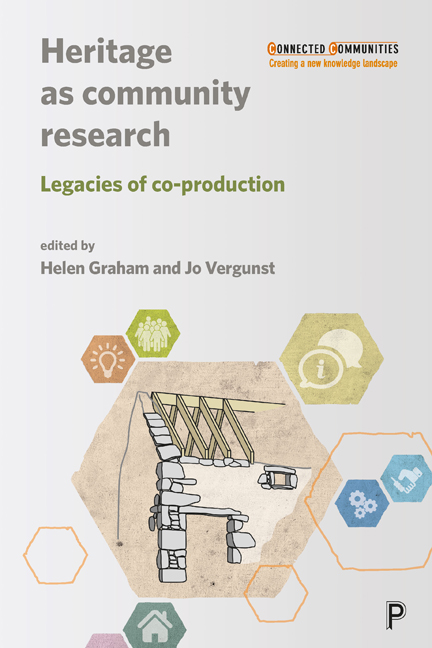one - Shaping heritage in the landscape among communities past and present
Published online by Cambridge University Press: 27 April 2022
Summary
Introduction
Can community-based archaeology achieve different outcomes from more traditional academic approaches? In this chapter, we explore how ways of knowing the past can alter significantly when the landscape is encountered through collaborative means. This not only provides a contrast to how archaeology is usually practised in university and professional settings, but also enables us to study relationships with landscape that span the past, present and future. If one of the preoccupations of mainstream archaeology is the regular chronological ordering of human activity from the past towards the present, working through a collaborative methodology opens onto how time and landscape can be understood in different ways.
Research co‑design and co‑production undermines assumptions that the past is a stable and static entity that can be uncovered and read off layer by layer (Simonetti, 2013). By drawing inspiration from phenomenological perspectives on landscape, we explore how notions of time develop from practical and discursive involvement with landscape. These forms of activity can become mediums through which senses of the past, present and future emerge; in this way of thinking, ‘time duration is measured in terms of human embodied experience of place and movement, of memory and expectation’ (Bender, 2002: S103). We would add that plants, animals, seasonality and other non-human components of landscape also create senses of time. As ways of life in the landscape continue, so time itself unfolds, not simply according to a calendrical or ‘clock’ chronology, but also by way of the qualities of being past, present and future, and of duration and change. This holds true for the ways of practising archaeology as much as for the landscapes of the past being described. Field research on ‘heritage’ can serve to provoke notions of temporality beyond standard associations with the past and beyond the imposition of a sense of time onto the landscape. By these means, collaboratively exploring the past of a landscape is also an emergence of its present and future.
Our argument builds on ideas and practices of community and public archaeology. Dalglish (2013: 2) writes that community archaeology:
is evident in the many projects which have community participation as a primary aim and in the new funding streams which support such projects … it has become possible to see such involvement as a particular way – not the only way – of doing archaeology.
- Type
- Chapter
- Information
- Heritage as Community ResearchLegacies of Co-production, pp. 27 - 50Publisher: Bristol University PressPrint publication year: 2019

